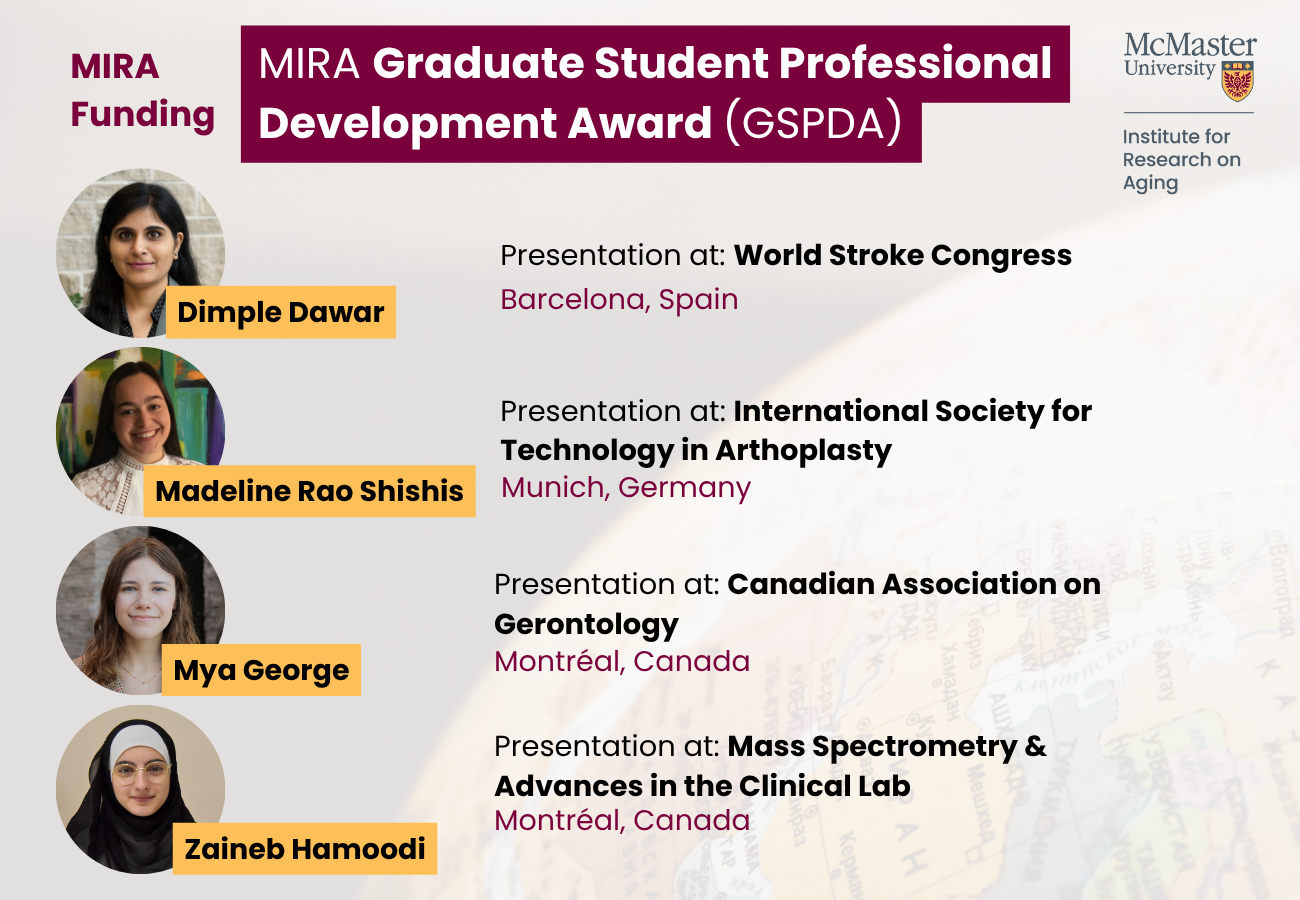
Published: April 4, 2020 | By Emily Dunford
Kate Zou completed a MIRA Undergraduate Summer Research Fellowship (USRF) in the Physics department under the supervision of Dr. Maikel Rheinstädter in the summer of 2019. During this interview, Kate spoke to us about her undergraduate research and involvement with the MIRA Trainee Network.
More information about the Rheinstädter lab can found at their lab website:
http://www.rheinstaedter.de/maikel/Membranes_Web/Membranes_Web.htm
Q: What brought you to be part of the MIRA trainee network?
Curiosity. As an undergraduate student, I am curious about what research questions McMaster scientists are asking, exploring and answering. The MIRA trainee network brings people from different faculties together, and it is truly amazing to see how diverse the MIRA projects are. Through the monthly meeting, I am constantly learning about aging from different angles — from the molecular mechanisms underlying the aging process to the social opportunities and challenges that the aging population brings. McMaster researchers are also bringing in solutions. From the smart homes designed by the engineers to the exercise and rehabilitation center established by kinesiologists.
Q: Tell us about the research project you are currently working on.
Alzheimer’s Disease is the most common type of dementia. This neurodegenerative disease affects approximately 30 million people worldwide, and there are 6 million new cases every year. Research on Alzheimer’s Disease could be traced back to a hundred years ago, but our current understanding of Alzheimer’s Disease is still very limited.
What we do know about Alzheimer’s Disease is that the disease is strongly correlated with a protein called amyloid. In my project, I study how different drugs interact with amyloid and the surrounding membranes. I study those effects on a molecular level, using microscopy, x-ray diffraction, and UV-visible spectroscopy.
Q: Can you explain more about the type of lab work you do to test membrane-active molecules versus the peptide-active molecules? What type of environment do you use to test these molecules?
In the Rheinstadter lab, we developed synthetic membranes to test protein-drug interactions. The peptide-active molecules directly target and act on amyloid, which is the protein in Alzheimer’s Disease. The membrane-active molecules, on the other hand, have an effect on the surrounding membrane. The changes in the membrane environment alter how proteins aggregate, in other words, the severity of the symptoms.
Q: What is the ultimate goal/purpose of this research?
The goal of my project is to compare the effects of membrane-active molecules versus the peptide-active molecules, thus providing new insights into the molecular mode-of-action of potential anti-Alzheimer’s drug.
Q: How does it relate to the aging population? How can this research/knowledge be applied to have a real-world impact?
While the findings from my project may not directly benefit the aging population, understanding of the protein-drug interactions is crucial for Alzheimer’s Disease drug discovery.
Q: Thinking of the interdisciplinary approach to tackle aging issues, if you had unlimited funding (the dream!), how would you extend your current research to include other disciplines to manage Alzheimer’s Disease?
If I had unlimited funding, I would try to find a way to deliver those potential drugs we found using a non-invasive but effective method. It would also be great to move onto animal testing and potentially clinical trials.
Q: Do you think your involvement with MIRA Trainee Network has changed your thoughts on research on aging and/or the way you interact with older adults?
Through the MIRA Trainee Network, I learned about how different disciplines analyze and tackle the challenges we are facing. It is eye-opening. At the same time, I could also see the similarities in those projects’ underlying logic. The MIRA Trainee Network also brings a group of brilliant researchers and students together. The conversations here are engaging and inspiring.
Q: What is your favorite aspect of research? Do you have any tips for students who are interested in an undergraduate summer research assistant with MIRA?
My favorite aspect of my project is that I get to “see” and make sense of something that is on the molecular level. It is amazing to think about how tiny those molecules are and somehow we could test how they interact. What I love about research, in general, is that we are building off from previous knowledge and that we bring something new to this ongoing conversation.
Thank you Kate, for discussing your research and your experiences with the MIRA Trainee Network. If you have an interest in Kate’s research please contact her at zoux4@mcmaster.ca.
This ​blog post was first published by the MIRA Trainee Network. Read the original article. ​

